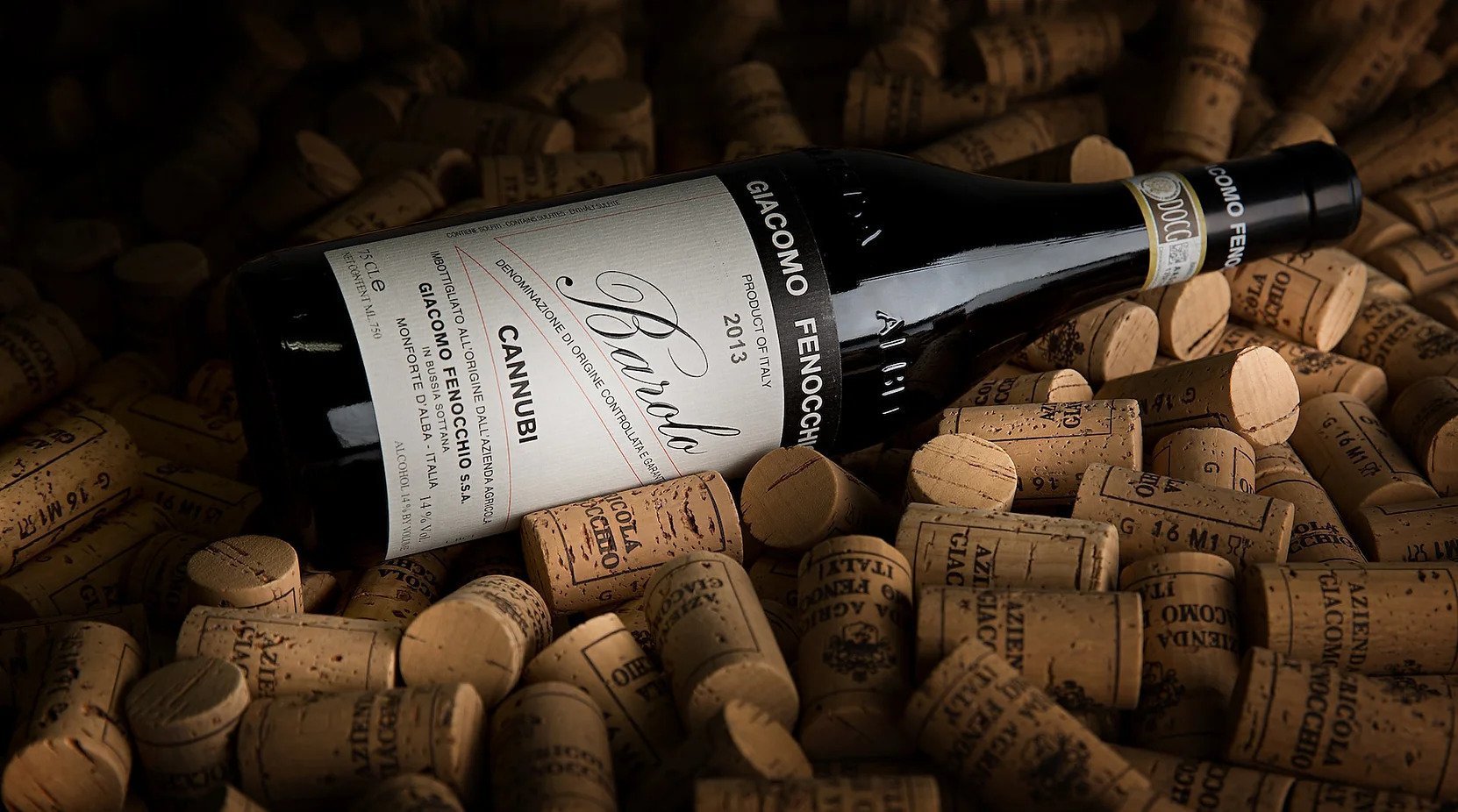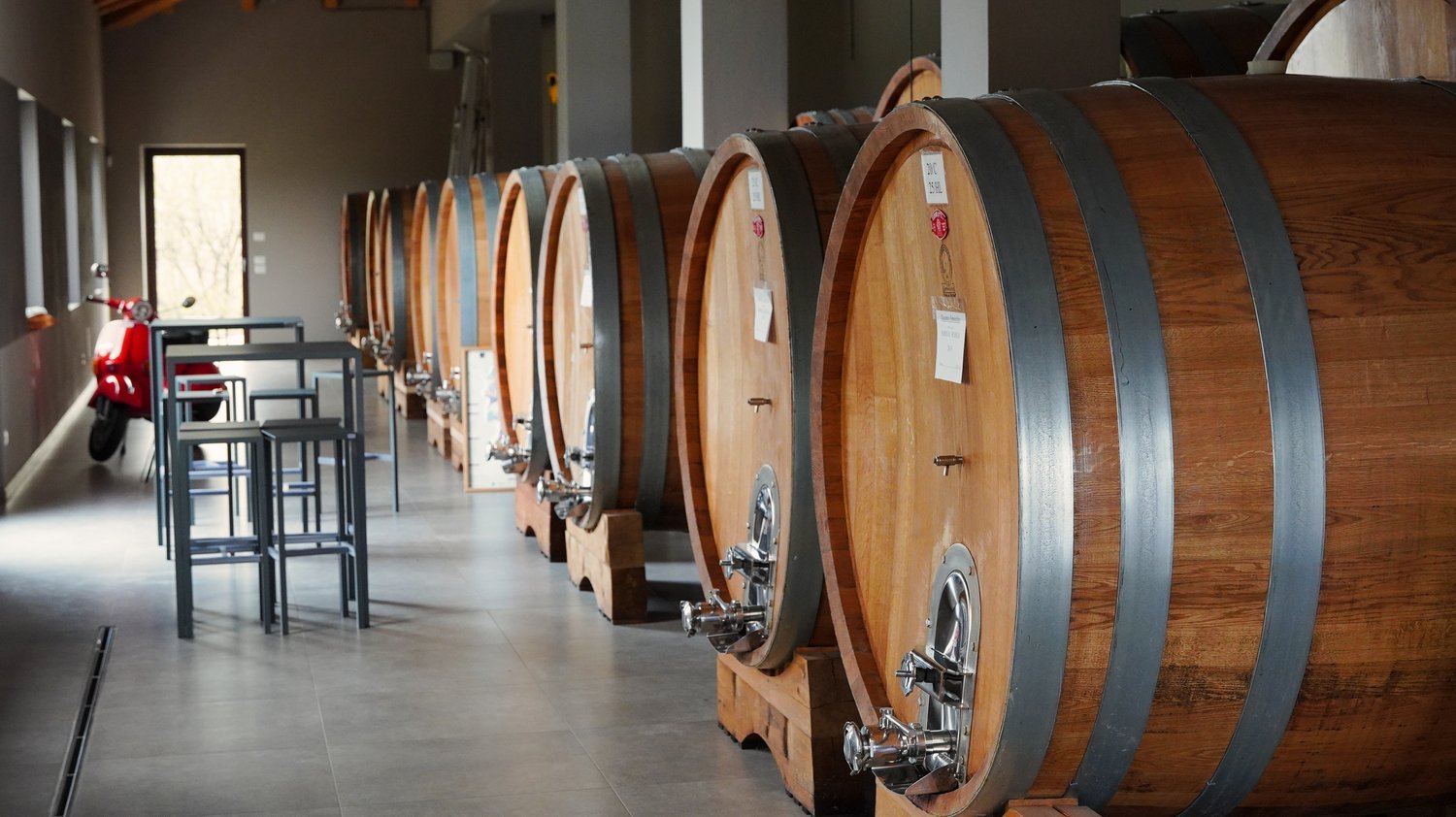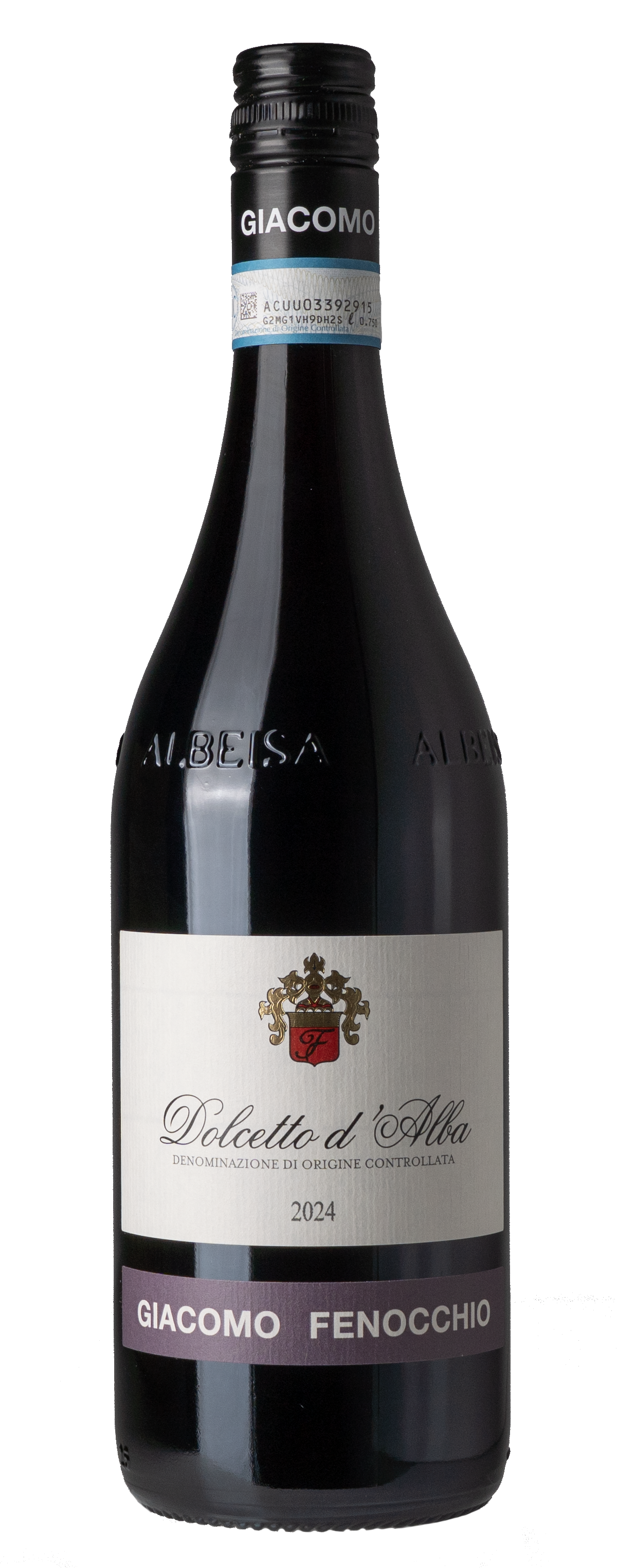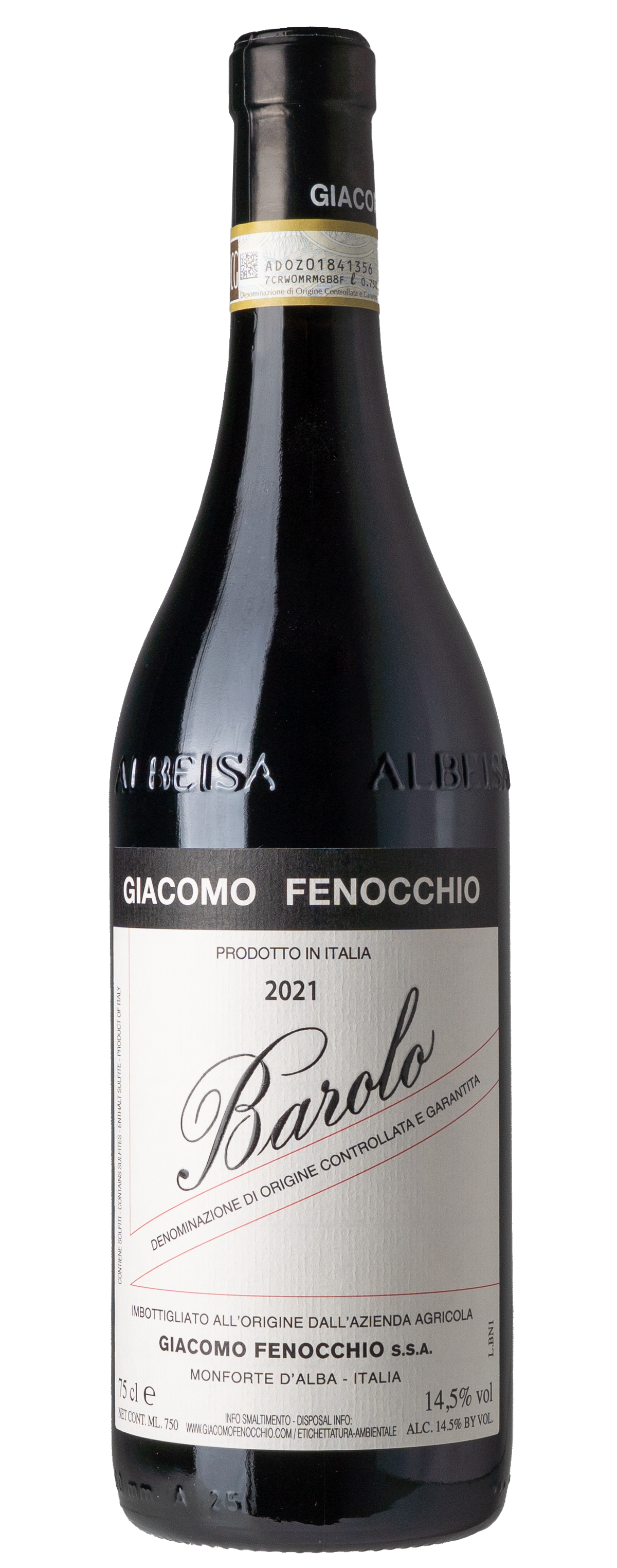Giacomo Fenocchio
Monforte d’Alba, Piedmont
In April of 1989, Claudio Fenocchio assumed all farming and winemaking duties his father Giacomo had previously held. These were challenging times for Barolo. When many producers were exploring new avenues to produce Barolo, and finding great commercial success, Claudio never strayed from the path of tradition. Just like the 4 generations that preceded him, he perpetuated the time-honoured techniques passed on to him.
Today, Claudio remains committed to crafting classic wines with an authentic expression and an unwavering focus on purity of fruit. Claudio’s wines display a level of terroir clarity that only producers of higher echelon manage to create. The Giacomo Fenocchio estate is comprised of prized vineyards (14 hectares in total) spread across Cannubi in Barolo, Villero in Castiglione Falletto, and Bussia in Monforte d’Alba, where the family cantina rests.
Modernity has found its way in the cantina. Stainless steel tanks and wooden fermenters coexist. They’re used to produce the whites along with the lush, bright reds that made the estate’s renown. Then, there are the venerated staples, made in large Slavonian oak casks dominating the pristine cellar. Claudio is partial to ambient yeasts, and though current macerations are long, he has been experimenting with ones that last as long as 90 days – an exploration of past methods that is yielding very promising results.
His vineyard management philosophy revolves around the enhancement of the various characteristics of the soil in each parcel, favouring optimum picking time to obtain fruit able to reach optimal ripeness and with a unique aromatic and flavour profile.
Dolcetto d’Alba 2024
Despite the raving reviews and success of late, both commercially and in the wine press world, Claudio doesn’t plan on resting on his laurels. In fact, he’s been working on the acquisition of new vineyard holdings in Bussia, a region in which he fondly believes. His love for his place of origins and respect for the Piedmontese traditions defined the fundamental principles inspiring his work today.
Winemaking:
The fruit comes from Monforte d’Alba’s Bussia cru. It grows on 30-year-old vines sitting at 300m above sea level on Helvetian clay, blue marl and tuff. The vineyard is West facing. It’s hand-harvested by the end of September, naturally fermented in stainless steel for 10 days, then matured in stainless steel for 6 months. The wine spends 6 months in bottle before release.
Tasting Notes:
It’s a typical everyday wine, with a vivid expression of the Langhe territory. It shows great presence and generosity of fruit aromas and flavours – blackberry and hints of violet, cocoa, black pepper and even earthy undertones.
Reviews:
Red cherry, floral, very pretty, almonds. Light-bodied, quite spicy, lively acidity, all the red fruits, a light dusting of tannin with a gentle sappiness on a crisp finish of good length. Kind of like a Pinot Noir, is how it struck me. Delightful wine. 93pts. Gary Walsh
2023 Barbera d’Alba Superiore
In addition to producing striking Barolos, Claudio delivers a delicious Barbera d’Alba offering amazing value for money. Here’s a Barbera d’Alba that’s full of gusto. It’s rich and intense with a great personality and so representative of the Langhe. This is a crowd pleaser.
Winemaking:
The fruit comes from Monforte d’Alba. It grows on 30-year-old vines sitting at 300m above sea level on Helvetian clay, blue marl and tuff. The vineyard is West facing. The fruit is hand-harvested in mid-October, naturally fermented in stainless steel for 10 days, then matured in stainless steel for 6 months and in large Slavonian oak for 6 months. The wine spends 6 months in bottle before release.
Tasting Notes:
It has a deep ruby hue with garnet reflections. The nose is intensely perfumed with raspberry, cherry and strawberry characters echoing on the silky, juicy palate. It’s full bodied with a pleasant level of acidity lifting spicy balsamic notes that carry on for a while.
2023 Langhe Nebbiolo
Claudio’s ambitions shifted in the early 1960's, with an eye to foreign markets. Today he exports a large portion of his wines, thereby building a name and reputation for his brand as well as the Piedmontese territory. The wines have remained classic, without significant variations, loyal to treasured traditions that were instrumental in creating the Giacomo Fenocchio identity.
Winemaking:
The fruit comes from the greater Langhe. It grows on 15-year-old vines sitting at 300m above sea level on Helvetian clay, blue marl and tuff. The vineyard is West facing. The fruit is hand-harvested in mid-October, naturally fermented in stainless steel for 10 days, then matured in stainless steel for 6 months and in large Slavonian oak for 6 months. The wine spends 6 months in bottle before release.
Tasting Notes:
It has a deep ruby red hue with garnet reflections and an intense and fruit-forward bouquet filled with plum, wild berry and cherry. There are also classic notes of rose and tar. The palate is rich and well balanced with silky tannins and hints of liquorice. So easy to love.
Review:
The 2023 Langhe Nebbiolo boasts dog rose, woodland berry, truffle and spice aromas. The full-bodied palate offers Morello cherry, cinnamon, orange zest and brandy warmth, with polished tannins supporting it all. 92pts. Kerin O’Keefe
Cherry, red fruits, floral, some liquorice root, lovely perfume, nuts, some spice. Medium-bodied, red fruits, even to strawberry, fine chalky grip to tannin, spicy and lightly savoury to finish. Bright. Very good drinking. Could twist my arm for 93pts. 92 pts. Gary Walsh
2023 Langhe Freisa
Nebbiolo’s little-known relative, the more rustic Freisa, displays similar traits including light hues, high tannins, acid drive, and an especially great ability to age. As far as varietal expression and potential to captivate, Freisa fits the bill. In this case, it’s more subdued than the Nebbiolo based wines, much like the marginal sites it hails from. Its name is inspired from the Latin word ‘freisa’, meaning strawberry.
Winemaking:
The fruit comes from the greater Langhe. It grows on 15-year-old vines sitting at 300m above sea level on Helvetian clay, blue marl and tuff. The fruit is hand-harvested early October, naturally fermented in stainless steel for 8 days, then matured in stainless steel for 6 months and in large Slavonian oak for 6 months. The wine spends 6 months in bottle before release.
Tasting Notes:
A complex and cheerful wine reminiscent of brambly fruit – wild berries and sun-ripe strawberries – with sweet and sour rhubarb compote undertones, complete with a Campari bitter edge.
2021 Barolo Classico
Claudio is effectively a master whose specialty is to craft Barolos with unbelievable pedigree…his hands-off approach in the cellar guarantees that each terroir comes across. Standing on the terrace of his house sitting on top of the hill overlooking his Bussia Sottana vineyards, he demonstrates just how small the entire Barolo growing area truly is: two hills over to the left of his Bussia vineyard is Cannubi, while on the right is Villero, the next hill over.
Winemaking:
The fruit comes from the greater Langhe. It grows on 20-year-old vines sitting at 350m above sea level on Helvetian clay, sand and limestone marl. It’s hand-harvested early October, naturally fermented in stainless steel for 40 days, then matured in stainless steel for 6 months and in large Slavonian oak for 30 months. The wine spends 12 months in bottle before release.
Tasting Notes:
The Barolo Classico offers the full breadth of Nebbiolo characteristics, plenty of dark fruit combined with spice, tar and tilled earth, and a marked liquorice signature. The palate boasts deep black and purple fruit, with typical tar and graphite. Not only does it show an alertness and great precision, but also a big-picture approach to Barolo with wholesome flavours.
2021 Barolo ‘Bussia’
Bussia is renowned for creating one of the most authentic expressions of Barolo in Monforte d'Alba. It’s been affectionately cultivated by the Fenocchio family for over 30 years. Covering an area of about 5 hectares, it enjoys optimal exposure to the South allowing a constant sun exposure and a soil composition conferring structure and complexity to Barolo. Giacomo Fenocchio highlights the most distinctive features of this icon of the Langhe hills, with a finesse that will only enhance with time.
Winemaking:
The fruit comes from Monforte d’Alba’s Bussia cru. It grows on 35-year-old vines sitting at 300m above sea level on Helvetian clay, calcareous sediment and iron rich soil. It’s hand-harvested mid-October, naturally fermented in stainless steel for 40 days, then matured in stainless steel for 6 months and in large Slavonian oak for 30 months. The wine spends 12 months in bottle before release.
Tasting Notes:
Bright ruby colour of good depth, garnet tints. The bouquet suggests more savoury stuff than fruity, the discrete berry and a black rose scents a little masked by dried blood, rusty nail, dried herb and liquorice aromas. The palate is also complex and savoury, the subtle fruit sweetness balanced by sapid elements and ferrous minerality, the tannins authoritative and mouth-coating, the whole building to an intense and long finish A wine of excellent depth and presence.
Reviews:
Mesmerizing with violet, herb, berry, menthol and spice aromas, the 2021 Bussia delivers cherry, raspberry preserve, cinnamon and mint on a full-bodied, structured palate. Fine tannins and bright acidity promise long aging. 98pts. Kerin O’Keefe
Dark and spicy, ripe cherries, mint and liquorice, dried roses, blond tobacco. A more powerful expression, lots of liquorice flavour, richness but also freshness, with an ironstone quality to tannin, and a ‘mineral’ feel to acidity. Such fine balance throughout, with a finish of outstanding length. A beautiful Bussia, so distinctive and delightful. 96pts. Gary Walsh
Roasted coffee, iron, bay leaf and allspice lead this animated Bussia. Dark cherry and fennel emerge on the palate, framed by chalky tannins and a saline finish. 94pts. Decanter
Blackberries, plums and cedar lead this medium- to full-bodied Bussia. Firm yet polished tannins support a juicy fruit core. 94pts. James Suckling
Cherry candy, sweet herbs and dried earth frame this vibrant Barolo. Savory iron-rich notes add depth to the ripe berry fruit. Ripe tannins and rich texture suggest solid aging potential. 94pts. Jeb Dunnuck
The 2021 Barolo Bussia is aromatic, graceful and seductive. Pine, mint, cloves, leather and wild cherry all come together in this exquisite, haunting wine. 94pts. Antonio Galloni – Vinous
2021 Barolo ‘Castellero’
It’s the second year this wine is produced using fruit from the Castellero cru (it previously went into the Barolo Classico). The vineyard is located between Bussia and Cannubi (next to Sandrones Cantina). Barolo Castellero offers all the attributes that make the Fenocchio Barolos so attractive. It’s bold and savoury, with exceptional balance and energy.
Winemaking:
The fruit comes from Castellero. It grows on 10 to 45-year-old vines sitting at 280m above sea level on Tortonian soil, marl, and sand. It’s hand-harvested during the first fortnight of October, naturally fermented in stainless steel and macerated on skins for 40 days, then matured in stainless steel for 6 months and in large Slavonian oak for 30
months. The wine spends 12 months in bottle before release.
Tasting Notes:
Bright ruby with garnet reflections. The nose is restrained yet complex, offering red cherry and wild strawberry beneath layers of dried rose, iron, tobacco, and a whisper of truffle. The palate is finely structured and savoury, with taut red fruit, saline minerality, and firm, chalky tannins. It finishes long and detailed, with hints of bitter herbs and rosehip. A poised and quietly powerful Barolo, true to Castellero’s character.
Reviews:
Cherry, some liquorice, hazelnuts, light baking spice. Fresh, bright, chamois-like tannin and light sandy grip, a little bit of earthy and tobacco flavour, red fruit and orange perfume on a finish of excellent length. Quite a serious wine with firmly-etched acidity that needs some time to relax. Structure and potential is very good here. 95pts. Gary Walsh
Forest floor, dog rose and camphor aromas open this elegant Barolo. Cherry, raspberry, cinnamon and mint lead the palate, supported by fine-grained tannins and bright acidity. 95pts. Kerin O’Keefe
Dried cherries, licorice and orange peel dominate the nose. Full-bodied, with dusty but ripe tannins and a savory, earthy finish. 94pts. James Suckling
The 2021 Barolo Castellero is taut and reticent, showing red fruit, iron, pepper and chalk. Earthy and mineral, with impressive structure and aging potential. 94+pts. Antonio Galloni – Vinous
Pure and lifted on the nose with cedar, raspberry, crushed flowers and tobacco. Medium-bodied and refreshing with ripe fruit, defined tannins and spiced finish. 93pts. Jeb Dunnuck
2021 Barolo ‘Cannubi’
Perhaps the most famous hill in Italy, Cannubi is the most celebrated and prestigious vineyard with the Barolo designation. Historically, it's the oldest Italian cru, recognised in 1752. Everything here conspires to create greatness: the perfect combination of altitude, exposure, soil composition, and microclimate result in a Barolo of uncontested prominence.
Winemaking:
The fruit comes from Cannubi. It grows on 30-year-old vines sitting at 280m above sea level on Tortonian soil, marl and sand. It’s hand-harvested during the first fortnight of October, naturally fermented in stainless steel for 40 days, then matured in stainless steel for 6 months and in large Slavonian oak for 30 months. The wine spends 12 months in bottle before release.
Tasting Notes:
The Barolo Cannubi is fabulous. It’s sumptuous and opulent with the structure to match. It sets the tone from the very first taste - rose, sweet red cherry, fresh mint, and sweet incense – a few of the many notes that jump out of the glass. On the palate, it stands firm with gravitas and sensuality. It’s the complete package.
Reviews:
A restrained and elegant Cannubi with red currants, violets and balsamic notes. Medium- to full-bodied, with ripe tannins, crisp acidity and cherry stone notes on the finish. 95pts. James Suckling
Perfumed and layered, the 2021 Cannubi reveals leather, raspberry liqueur, violets and candied licorice. Juicy and approachable up front, then more compact and energetic through the finish. 95pts. Jeb Dunnuck
Fragrant with rose, camphor and spice, the 2021 Cannubi delivers cherry, strawberry compote, blood orange and star anise on a full-bodied, savory palate. Close-grained tannins give grip. 95pts. Kerin O’Keefe
The 2021 Barolo Cannubi is classic and lifted, with bright acids slicing through sweet red fruit, mint, orange peel, cinnamon and leather. Chiseled and nuanced.
95pts. Antonio Galloni – Vinous
Redolent of rhubarb compote, cherry bark, toasted hazelnut and earth, this full and dense Cannubi is framed by sandy tannins and citrussy acidity. A crisp, thrilling finish. 94pts. Decanter
2021 Barolo ‘Villero’
The fruit comes from a single hectare vineyard situated in neighbouring Castiglione Falletto, on a hilly ridge that runs through a heart of limestone and clay soils. Vineyard work focuses on preserving the natural ecological balance of the land; the yields are balanced, neither pushed, not restrained, to achieve a perfect balance between concentration of tannins and colour intensity whilst emphasizing the wine’s finesse. The Barolo Villero boasts a strong territorial bond. It shows in a deep bouquet and mouth coating tannins that will support long aging.
Winemaking:
The fruit comes from Villero. It grows on 65-year-old vines sitting at 300m above sea level on Helvetian soil made of clay, calcareous sediments and rich in iron. It’s hand-harvested during the first fortnight of October, naturally fermented in stainless steel for 40 days, then matured in stainless steel for 6 months and in large Slavonian oak for 30 months. The wine spends 12 months in bottle before release.
Tasting Notes:
It’s vibrant and youthful, with delicate yet luscious strawberry, redcurrant and cherry aromas and a rosy scent. The palate is fleshy with well-rounded tannins that are ripe and extremely polished, resulting in a wine that’s opulent yet not overdone.
Reviews:
Dark aromas of graphite, potpourri, smoke, bergamot and dried cherries shape this meaty, concentrated Barolo. Firm tannins, a dusty texture and refreshing acidity lead to a powerful, mint-laced finish. Extracted and balanced for the long haul. 97pts. James Suckling
All about finesse and vibrancy, the 2021 Villero is a stunner. Perfumed berry, rose, spice and eucalyptus lead the nose, while the full-bodied palate delivers cherry, strawberry, orange zest and star anise. Refined tannins and bright acidity keep it energized. 97pts. Kerin O’Keefe
Crafted from 65-year-old vines, the 2021 Villero is as expressive as it is textured. Smoke, cinnamon, violet and sarsaparilla lead to a rich mid-palate of dark fruit framed by grainy tannins and sappy acidity. Brilliant balance. 96pts. Decanter
The 2021 Barolo Villero is laced with spice, leather, herbs, menthol and licorice. It exudes depth, structure and classicism, with signature balsamic inflections and virile intensity. A superb showing. 96pts. Antonio Galloni – Vinous
Floral and layered, the 2021 Villero opens with blood orange, red berries, clove, mint and cedar incense. Medium-bodied and linear with refined tannins, bright acidity and a tapering finish. 95pts. Jeb Dunnuck
2019 Barolo ‘Bussia’ Riserva
The term "90 di" refers to the traditional method of keeping the cap of grape skins submerged for 90 days after fermentation. This is done by placing oak planks in a parallel pattern inside the tank, preventing the skins from rising. The tank is then completely filled with wine to eliminate air exposure and sealed. This extended maceration allows for a gentle extraction of desirable elements from the skins, enhancing complexity and texture. By minimising oxygen contact, the process also enables a slow, controlled post-fermentation period that contributes to the wine’s elegance and longevity.
Winemaking:
The fruit comes from Bussia. It grows on 30-year-old vines sitting at 300m above sea level on Helvetian soil made of clay, calcareous sediments and rich in iron. It’s hand-harvested in mid-October, naturally fermented in stainless steel, including maceration on skins for 90 days, then matured in stainless steel for 6 months and in large Slavonian oak for 4 years. The wine spends 12 months in bottle before release.
Tasting Notes:
It has a bright garnet red hue with orange reflections. The nose has intense aromas typical of Nebbiolo - rose, truffle, weathered leather. On the palate it has hints of black cherry, truffle, sweet spices, and notes of dried herbs. By this point, the tannins seamlessly complement the tertiary characters adding considerable depth and complexity to the persistent finish.


















